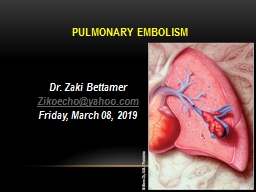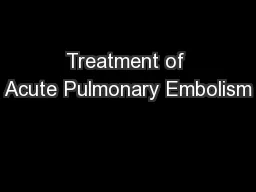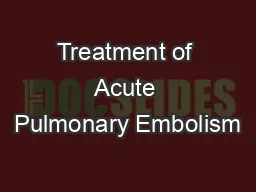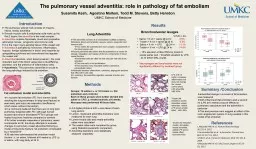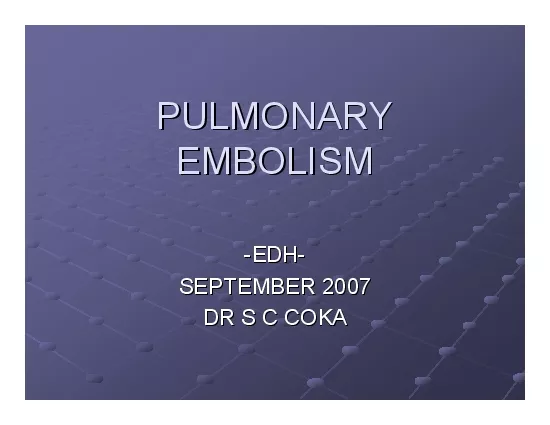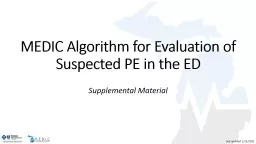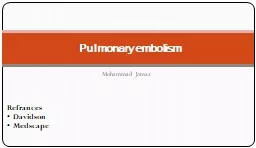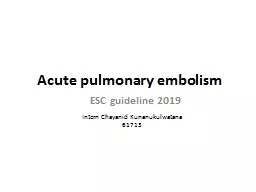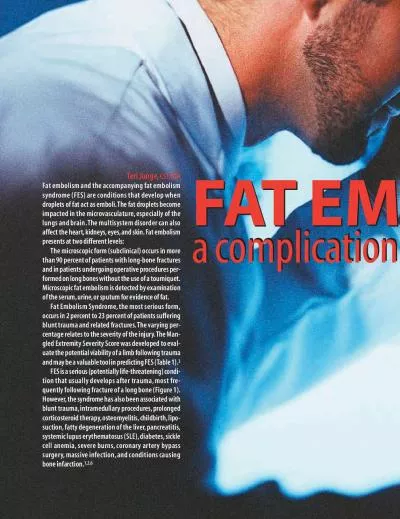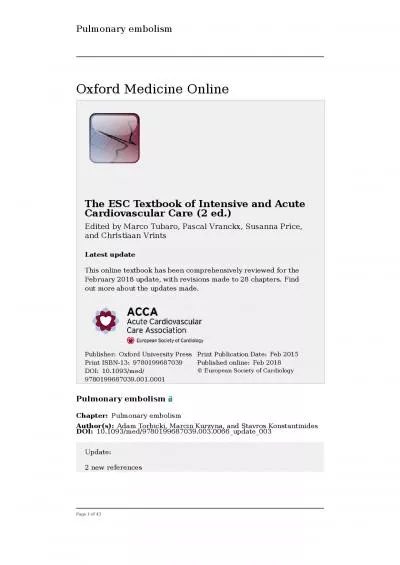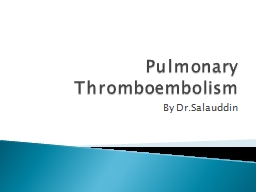PPT-pulmonary embolism Dr. Zaki
Author : taylor | Published Date : 2024-03-13
Bettamer Zikoechoyahoocom Friday March 08 2019 67 years Old male presented with acute dyspnea Pleuritic Right side chest pain and hemoptysis with history of recent
Presentation Embed Code
Download Presentation
Download Presentation The PPT/PDF document "pulmonary embolism Dr. Zaki" is the property of its rightful owner. Permission is granted to download and print the materials on this website for personal, non-commercial use only, and to display it on your personal computer provided you do not modify the materials and that you retain all copyright notices contained in the materials. By downloading content from our website, you accept the terms of this agreement.
pulmonary embolism Dr. Zaki: Transcript
Download Rules Of Document
"pulmonary embolism Dr. Zaki"The content belongs to its owner. You may download and print it for personal use, without modification, and keep all copyright notices. By downloading, you agree to these terms.
Related Documents

